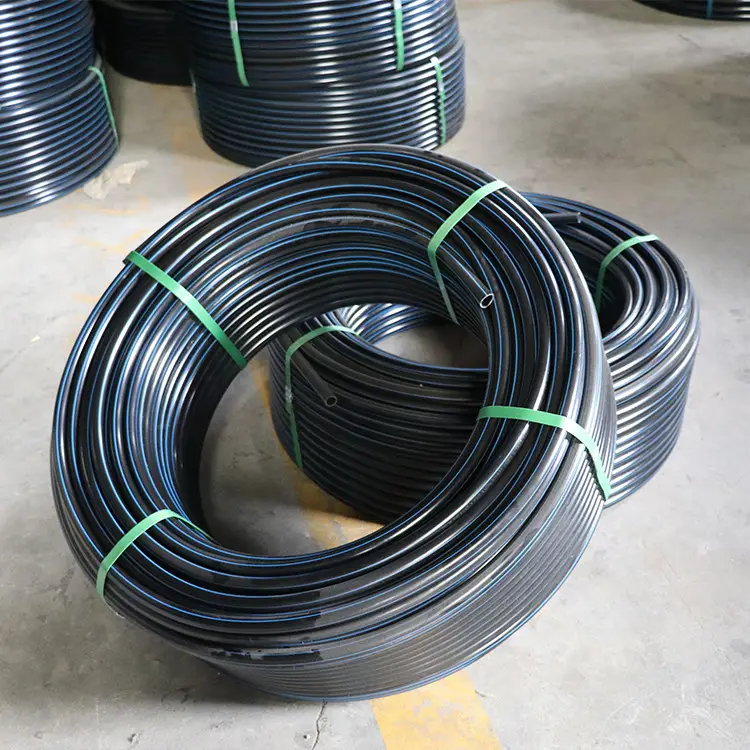Types of Drainage Pipes: An Overview
2025-06-23
Drainage systems are essential in managing water flow, preventing flooding, and protecting properties. The type of drainage pipe selected for a system plays a significant role in determining its efficiency, durability, and overall functionality. Different types of drainage pipes are designed to handle varying water volumes, environmental conditions, and specific installation requirements. In this essay, we will explore several common types of drainage pipes, their characteristics, uses, and advantages.
1. PVC (Polyvinyl Chloride) Pipes
Polyvinyl chloride (PVC) pipes are one of the most widely used materials for drainage systems, particularly in residential and commercial applications. PVC is durable, lightweight, and resistant to corrosion, making it ideal for underground drainage. These pipes are also easy to install, as they can be quickly joined with solvent cement.
Advantages:
Resistant to chemicals, rust, and corrosion.
Lightweight and easy to handle.
Relatively low cost.
Smooth inner surface reduces the risk of clogs.
Common Uses:
Residential drainage systems.
Stormwater drainage.
Sewer systems.
2. HDPE (High-Density Polyethylene) Pipes
HDPE pipes are another popular choice for drainage systems due to their strength and flexibility. They are known for their resistance to high pressures, chemicals, and environmental factors such as UV radiation. HDPE pipes are also flexible, which allows them to be installed with fewer joints, reducing the potential for leaks.
Advantages:
Highly flexible and resistant to cracking.
Durable in harsh environmental conditions.
Lightweight, which simplifies installation.
Can handle both low and high pressure.
Common Uses:
Agricultural drainage.
Stormwater systems.
Sewage and wastewater systems.

3. Cast Iron Pipes
Cast iron pipes have been traditionally used for drainage, particularly in older buildings. They are highly durable and can last for several decades if maintained properly. Cast iron is resistant to corrosion and fire, making it a reliable option for both indoor and outdoor drainage systems.
Advantages:
Extremely durable and long-lasting.
Fire-resistant.
Noise-reducing properties.
Can handle high-pressure water flow.
Common Uses:
Industrial drainage systems.
Sewer lines in older buildings.
Stormwater drainage.
4. Concrete Pipes
Concrete pipes are a robust and durable option for drainage systems. They are especially well-suited for large-scale applications, such as stormwater runoff, sewage treatment plants, and highway drainage. Concrete pipes are usually reinforced with steel to enhance their structural strength and prevent cracking under heavy loads.
Advantages:
High compressive strength.
Suitable for large-scale drainage applications.
Long lifespan.
Fire and weather resistant.
Common Uses:
Large drainage systems (e.g., municipal stormwater).
Sewage and wastewater pipes.
Culverts and underpasses.
5. Clay Pipes
Clay pipes, also known as vitrified clay pipes, have been used for centuries in drainage systems. These pipes are made from clay that is fired at high temperatures to create a durable, non-porous material. Although they are not as commonly used today, they still serve a purpose in some modern drainage systems, especially in areas with a history of using clay materials.
Advantages:
Long-lasting, with some clay pipes lasting over a century.
Non-toxic and eco-friendly.
Resistant to corrosion and chemical damage.
Common Uses:
Residential drainage.
Sewer systems.
Agricultural drainage.
6. Corrugated Steel Pipes
Corrugated steel pipes are used in situations where flexibility and strength are required. These pipes are made of galvanized steel and are typically used in stormwater drainage and culverts. The corrugated design gives the pipe added strength while maintaining flexibility.
Advantages:
Flexible and strong.
Resistant to wear and tear.
Can be installed in challenging environments.
Common Uses:
Highway and road drainage.
Culverts.
Stormwater drainage systems.
7. Fiberglass Pipes
Fiberglass pipes are used for specialized drainage applications where strength and corrosion resistance are necessary. These pipes are made by winding layers of fiberglass around a core to create a lightweight but durable product. They are highly resistant to chemical reactions, which makes them suitable for industrial drainage.
Advantages:
Lightweight and easy to handle.
Corrosion-resistant.
Can withstand harsh chemical environments.
Common Uses:
Industrial wastewater systems.
Chemical drainage systems.
Oil and gas pipelines.
Conclusion
The choice of drainage pipe is crucial for the efficiency and longevity of any drainage system. Each type of drainage pipe comes with its own set of advantages and is suited for specific applications. PVC and HDPE pipes are widely used for residential and commercial purposes due to their cost-effectiveness and ease of installation. Cast iron, concrete, and clay pipes offer superior durability, often used in older or large-scale drainage systems. Finally, specialized options like fiberglass and corrugated steel are suitable for more challenging environments or specific industrial needs. Understanding the properties of each type of drainage pipe helps ensure a reliable and efficient drainage system tailored to the needs of the installation.
As a professional manufacturer and supplier, we provide high-quality products. If you are interested in our products or have any questions, please feel free to contact us.